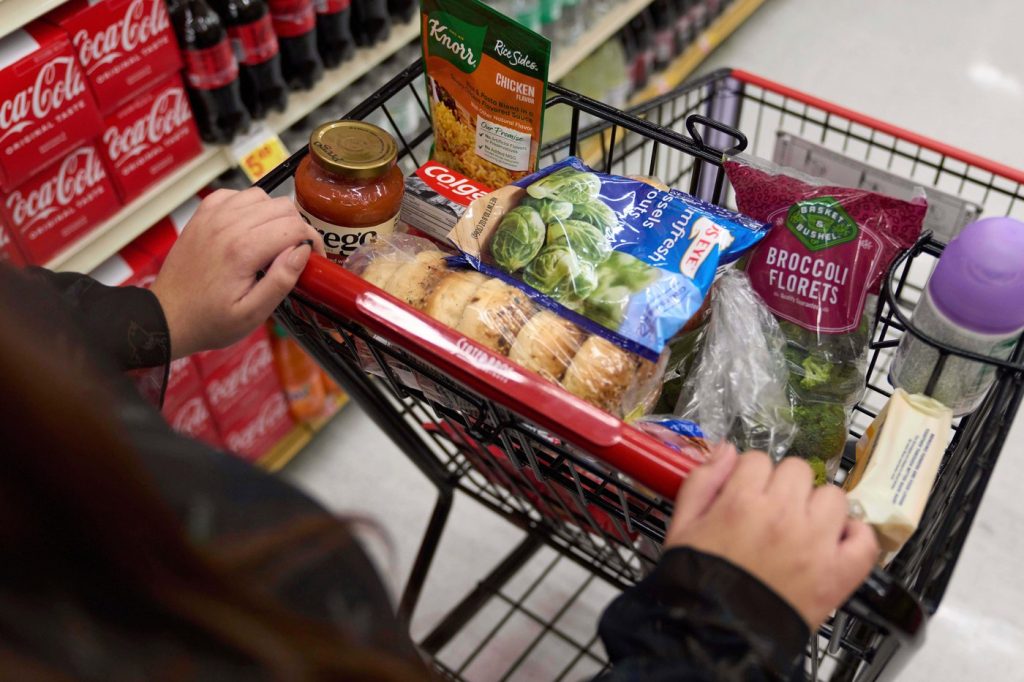World
U.S. Federal Food Benefits Face Cuts as Shutdown Persists

Federal food assistance programs are set to experience significant disruptions starting November 1, 2023, if the ongoing U.S. government shutdown continues. Tens of millions of Americans rely on these funds to purchase food and access preschool education for their children. The shutdown jeopardizes essential support systems, including the Supplemental Nutrition Assistance Program (SNAP), which assists approximately one in eight Americans with grocery purchases.
Under SNAP, eligible low-income families receive debit cards loaded monthly by the federal government. These cards are specifically designated for purchasing groceries at approved stores and farmers’ markets. The average benefit amount is around $187 per person, and many beneficiaries fall below the poverty line. As the shutdown deepens, there is uncertainty regarding whether remaining benefits on cards will be accessible. Some state officials, such as those in Arkansas, recommend that residents utilize any available funds this month on non-perishable items.
The Trump administration has dismissed the possibility of utilizing a $5 billion contingency fund to maintain SNAP benefits. This decision stands in contrast to a recent report from the U.S. Department of Agriculture, which indicated that such a fund could cover SNAP benefits in the event of funding lapses. Advocacy groups and Democratic lawmakers are urging the administration to reconsider this stance to prevent hardship for millions of families.
States Take Action to Mitigate Impact
In response to the looming cuts, several states are proactively seeking solutions. Officials in Louisiana, Vermont, and Virginia have pledged to provide temporary support to fill the gap left by federal funding shortages. In Louisiana, where nearly 800,000 residents depend on SNAP, the House unanimously voted to allocate $150 million from the state budget to ensure benefits continue. This resolution is awaiting Senate approval.
Additional funding for food banks and pantries is planned in states like New Hampshire, Minnesota, and California. New York’s Governor, Kathy Hochul, announced plans to expedite $30 million in emergency food assistance to support local food pantries. In California, Governor Gavin Newsom has mobilized the National Guard to assist food banks, although some have opted not to utilize this support. He has also made $80 million available for food banks facing increased demand due to the potential loss of SNAP benefits.
Despite these efforts, some states have reported challenges in backfilling SNAP benefits due to technical limitations in loading state funds onto recipients’ cards. The U.S. Department of Agriculture has clarified that states will not be reimbursed for any assistance they provide during this period.
Early Childhood Education at Risk
The shutdown also threatens early childhood education programs, with over 130 Head Start programs facing the loss of annual federal grants if the government remains closed. The National Head Start Association has indicated that these centers are now assessing their financial viability, as federal funding constitutes the majority of their operating budgets. A shutdown could severely disrupt education and childcare for many of the nation’s most vulnerable preschoolers, forcing families to miss work or school.
As of now, several Head Start programs have already missed expected federal disbursements, despite remaining operational through dwindling reserves or local government assistance. Overall, more than 65,000 seats at Head Start programs nationwide could be affected by the ongoing funding crisis.
Support for Mothers and Young Children
The Special Supplemental Nutrition Program for Women, Infants, and Children (WIC), which serves over 6 million low-income mothers and young children, is also at risk of running out of funding. Although the program received a temporary boost to remain operational through the end of October, it is projected to run dry by November 8, 2023. The Trump administration had previously redirected $300 million in unspent tariff proceeds to support WIC, but this infusion was only a short-term solution.
As the shutdown continues, the implications for millions of families across the United States are dire. With federal aid on the brink of depletion, advocates are calling for urgent action to protect these essential programs. The ongoing deadlock between lawmakers complicates efforts to ensure that vulnerable populations receive the support they need during this critical time.
-

 Science2 months ago
Science2 months agoToyoake City Proposes Daily Two-Hour Smartphone Use Limit
-

 Health2 months ago
Health2 months agoB.C. Review Reveals Urgent Need for Rare-Disease Drug Reforms
-

 Top Stories2 months ago
Top Stories2 months agoPedestrian Fatally Injured in Esquimalt Collision on August 14
-

 Technology2 months ago
Technology2 months agoDark Adventure Game “Bye Sweet Carole” Set for October Release
-

 World2 months ago
World2 months agoJimmy Lai’s Defense Challenges Charges Under National Security Law
-

 Technology2 months ago
Technology2 months agoKonami Revives Iconic Metal Gear Solid Delta Ahead of Release
-

 Technology2 months ago
Technology2 months agoSnapmaker U1 Color 3D Printer Redefines Speed and Sustainability
-

 Technology2 months ago
Technology2 months agoSolve Today’s Wordle Challenge: Hints and Answer for August 19
-

 Technology2 months ago
Technology2 months agoAION Folding Knife: Redefining EDC Design with Premium Materials
-

 Business2 months ago
Business2 months agoGordon Murray Automotive Unveils S1 LM and Le Mans GTR at Monterey
-

 Lifestyle2 months ago
Lifestyle2 months agoVictoria’s Pop-Up Shop Shines Light on B.C.’s Wolf Cull
-

 Technology2 months ago
Technology2 months agoApple Expands Self-Service Repair Program to Canada







